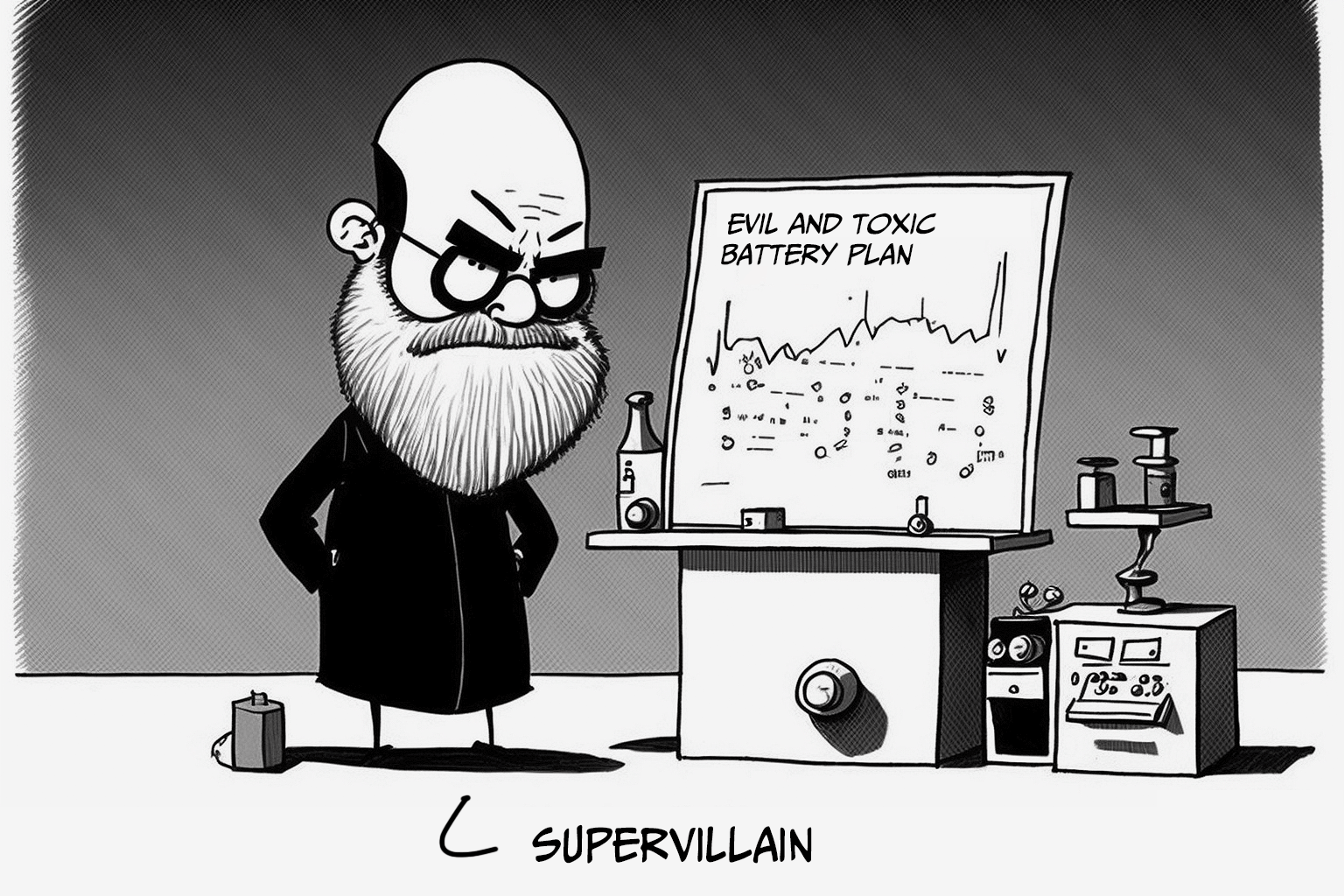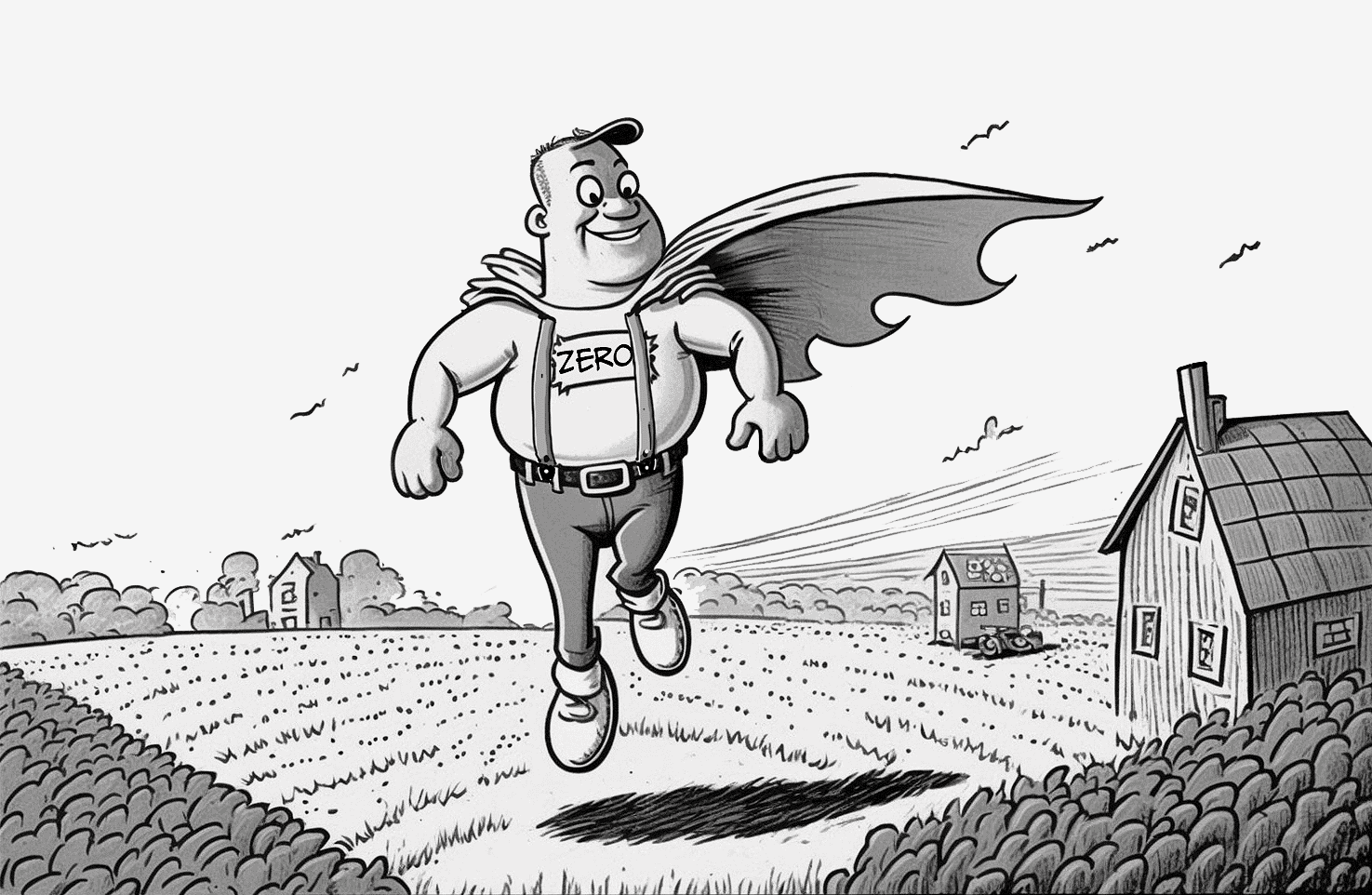Battery-Free IoT for Sustainable Development


Picture this: It's the year 2100, and the world is a utopia of lush green forests, crystal-clear lakes, and cities teeming with energy-efficient technologies. You're zipping around on your solar-powered hoverboard, marveling at the eco-friendly world humanity has managed to create, all while your smart toaster at home is cooking you a perfect slice of toast using energy harvested from the vibrations of your morning dance party. Sounds like a dream, right?
Well, buckle up because we're about to take a deep dive into one of the crucial puzzle pieces that could help bring this green, sustainable world to life: battery-free Internet of Things (IoT) devices. You might be thinking, "What does the IoT have to do with sustainability?" or "Aren't batteries pretty much in everything?"—and that's exactly what we'll be exploring in this article.
We'll start by discussing the world of IoT, which is basically like the behind-the-scenes wizard that makes all your favorite gadgets and systems talk to each other. From there, we'll dive into the dark side of traditional batteries, which, spoiler alert, aren't exactly Mother Nature's best friend. Finally, we'll see how some of the smartest brains on the planet are using battery-free microcontrollers to create sustainable, eco-friendly solutions for all sorts of industries, helping us inch closer to that green utopia we daydreamed about earlier. Ready to embark on this journey into the future of a cleaner, more efficient, and sustainable planet? Let's go!
Background on IoT and its role in sustainability
Okay, so let's talk batteries. You know, those little cylinders of energy that power our lives, from TV remotes to smartphones to electric cars. They're like the lifeblood of our gadgets, but they're also kind of like that mischievous cousin at a family gathering—always leaving a trail of chaos in their wake.
For starters, there's the whole resource consumption and extraction thing. Mining the materials needed for batteries, like lithium, cobalt, and nickel, isn't exactly a walk in the park. It can lead to deforestation, water pollution, and greenhouse gas emissions. Not cool, batteries, not cool.
And then there's the whole hazardous waste and pollution issue. Traditional batteries are kind of like ticking environmental time bombs, just waiting to release their toxic cocktail of chemicals into the environment. Landfills are practically overflowing with discarded batteries, and when those chemicals seep into the soil and water, we're all in for a not-so-fun surprise.
Recycling and disposing of batteries is also a bit of a mess. Sure, there are recycling programs, but let's be honest—how many of us actually remember to recycle our batteries? And even when we do, it's not a perfect process. Energy inefficiency, hazardous waste generation, and costly recycling procedures make it clear that we're in desperate need of a better solution.
So, are batteries really the supervillain of our sustainable future? Not quite, but they're definitely not helping our cause. It's high time we explore greener alternatives that can power our IoT devices and help us build a cleaner, more eco-friendly world. And that's where battery-free microcontrollers come to the rescue.

Battery-Free Microcontrollers: An Eco-friendly Alternative
Enter the heroes of our story: battery-free microcontrollers. You might be wondering, "What the heck is a battery-free microcontroller?" Well, imagine a tiny, clever computer chip that can power your favorite IoT devices without needing a battery. That's right—no toxic chemicals, no mining, and no ticking environmental time bomb. Just pure, clean energy. Sounds like a dream, doesn't it?
These little wizards of technology are powered by something called ambient energy harvesting, which is basically a fancy way of saying they steal energy from their surroundings. It's like they're constantly sipping on an all-you-can-drink energy buffet, and there are four main types of energy on the menu: solar, thermoelectric, piezoelectric, and RF energy. Let's break them down real quick:
- Solar: These fellas just love basking in the sun, soaking up all those sweet, sweet photons and converting them into electricity. They're like little sunbathers, but for your gadgets.
- Thermoelectric: They're like little energy ninjas, sneaking around and nabbing any temperature differences between two materials to generate electricity. Science is cool, huh?
- Piezoelectric: These guys are basically the life of the party, turning vibrations and mechanical stress into electricity. So, if you're having a dance party, these devices are definitely joining in.
- RF energy: Finally, we've got the radio wave lovers who just can't resist absorbing RF energy from nearby wireless signals and turning it into power for your devices.
Now, you might be thinking, "Okay, these battery-free microcontrollers sound great, but what's in it for me?" Well, there are plenty of benefits to going battery-free, like reducing e-waste, lowering energy consumption, minimizing maintenance requirements, and extending the lifespans of your devices.
So, are you ready to join the battery-free revolution and help create a greener, more sustainable world? Let's dive into some real-world applications of these magical microcontrollers and see how they're transforming industries for the better.
Real-World Applications of Battery-Free IoT
Alright, now that we've introduced our eco-friendly heroes, let's see them in action, shall we? Battery-free IoT devices are popping up all over the place, transforming industries and helping us create a more sustainable future. Here are a few examples of how these tiny marvels are making a big impact:
Agriculture and farming
- Precision farming: Farmers are basically the original superheroes, and now they're teaming up with battery-free IoT devices to make their jobs even more powerful. By using energy-harvesting sensors to monitor soil moisture, temperature, and nutrient levels, they can optimize crop growth and reduce resource waste.
- Smart irrigation systems: Water is a precious resource, and battery-free IoT devices are helping to make sure it's used wisely. With wireless sensors and smart algorithms, farmers can fine-tune their irrigation systems to deliver the perfect amount of water to their crops—no more, no less. Say goodbye to wasteful water practices and hello to a greener future!

Smart cities and infrastructure
- Intelligent street lighting: IoT devices are lighting up the night in the most eco-friendly way possible. By using sensors to detect when and where light is needed, cities can save a ton of energy and reduce light pollution. Plus, they can use the same sensors to monitor traffic and other city data, making urban life smoother and more efficient.
- Traffic management and monitoring: Traffic jams and gridlock are the bane of every city-dweller's existence, but clever IoT devices are here to save the day. By using wireless sensors to track traffic patterns, cities can optimize traffic flow and reduce emissions.
Environmental monitoring
- Air quality sensors: Breathing clean air is kind of important, and battery-free IoT devices are stepping up to help keep our air fresh and pollution-free. With air quality sensors, we can monitor pollution levels and take action to reduce emissions in real-time.
- Wildlife tracking: Battery-free IoT devices are also lending a hand to our furry, feathered, and scaly friends. By using energy-harvesting sensors for wildlife tracking and monitoring, we can gather crucial data on animal populations and habitats without disturbing their natural routines.
Energy management
- Smart grid systems: Energy management is a huge part of building a sustainable future, and IoT devices are taking center stage. By using wireless sensors in smart grid systems, we can monitor energy usage, detect faults, and optimize power distribution.
- Renewable energy monitoring: As we shift to renewable energy sources like solar and wind, IoT devices are playing a crucial role in making that transition smooth and efficient. With energy-harvesting sensors, we can monitor the performance of solar panels and wind turbines, ensuring they're working at maximum capacity and contributing to a cleaner, greener world.
So, there you have it—a glimpse into the world of battery-free IoT devices and their incredible potential to make our planet a more sustainable, eco-friendly place.
Challenges and Future Directions
Now, before we all break out the confetti and celebrate our battery-free future, it's important to acknowledge that there are still a few hurdles we need to clear. Just like any superhero, battery-free IoT devices have their share of challenges to overcome before they can truly save the day. Let's take a look at some of the obstacles and how we might tackle them in the coming years:
Technical limitations and scalability: As awesome as battery-free microcontrollers are, they still have a few kinks to work out. For one, they usually generate less power than traditional batteries, which means they might not be suitable for all applications just yet. But don't worry; our trusty scientists and engineers are working tirelessly to push the boundaries of what these little energy harvesters can do, and with every passing day, they're getting stronger, faster, and more efficient.
Standardization and interoperability: In a world where IoT devices are as diverse as the people who use them, it's crucial that we have a common language for our battery-free gadgets to communicate with one another. This means developing standardized protocols and ensuring that different types of energy harvesters can work together seamlessly. It's like teaching our battery-free superheroes to speak the same language, so they can join forces and save the planet in perfect harmony.
Public awareness and adoption: Like any great innovation, battery-free IoT devices need a little help from their friends (that's us) to truly take off. This means spreading the word about their eco-friendly benefits and making sure people understand the importance of ditching traditional batteries for a greener alternative. So, tell your friends, family, and anyone who will listen that battery-free IoT devices are the wave of the future, and let's all do our part to make this planet a cleaner, more sustainable place.
Policy and regulatory considerations: As with any game-changing technology, there's bound to be some red tape to navigate. To make sure battery-free IoT devices can reach their full potential, we need to work with policymakers and regulators to create a supportive environment that encourages innovation and promotes widespread adoption. It's like building a solid foundation for our battery-free superheroes to stand on, so they can reach for the stars and change the world.
So, while there are still some challenges to overcome, the future of battery-free IoT devices is bright and full of promise. By working together to address these issues, we can help pave the way for a greener, more sustainable world where our IoT devices run on clean, renewable energy and our planet thrives.
Conclusion
Well, we've come to the end of our battery-free journey, and what a wild ride it's been. We've explored the murky depths of traditional batteries, and their impact on our environment discovered the world of battery-free microcontrollers and their incredible energy-harvesting powers, and seen how these little eco-friendly heroes are transforming industries and making the world a greener place.
So, what's next? The road ahead is filled with opportunities for innovation, collaboration, and progress as we work to unlock the full potential of battery-free IoT devices. And you, my friend, have a crucial role to play in this story. By embracing and championing eco-friendly technologies like battery-free IoT devices, we can all contribute to creating a cleaner, more efficient, and sustainable future for our planet.
As we forge ahead, let's remember that the future is not set in stone—it's shaped by the choices we make, the technologies we adopt, and the values we prioritize. It's up to us to write the next chapter of our planet's story, and if we can harness the power of battery-free IoT devices, who knows what incredible heights we'll reach?
Here's to a future where our IoT devices sip energy from the sun, dance to the vibrations of the Earth, and work together in perfect harmony to create a greener, more sustainable world. So, grab your solar-powered hoverboard, fire up your battery-free smart toaster, and let's make this dream a reality.












